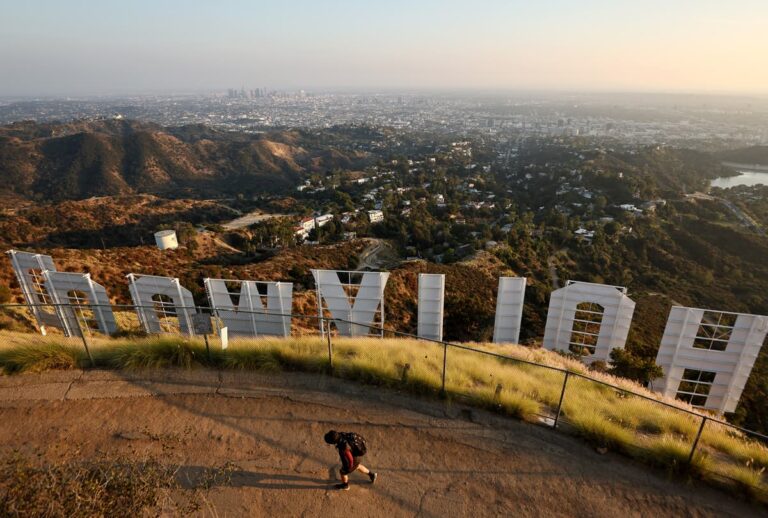Films may be able to immerse us in a world far away, but most of them aren’t that great for what we live in. Notorious for the environment, film sets guzzle energy and fuel, plows single-use plastic, creating a lot of waste.
With hundreds of cast and crews, hundreds of creative sets and outfits, as well as first-class talents treated like royalty, being green has always been no prioritized for Hollywood. It’s changing, and Leonardo DiCaprio isn’t just defending progress. Behind the scenes, an army of industrial workers begins to fight.
Sustainability in Hollywood
From the use of sustainable materials to recycling props, outfits and even crew workwear to providing more environmentally friendly lunch options, electric vehicles and energy-efficient lighting, changes are required, and sustainable efforts are driving the call sheet firmly.
It’s an inspiring topic in the wake of a January wildfire in California, at the heart of the LA A-list community. Mel Gibson, Miles Terror and Anthony Hopkins were all lost in the fire.
So, how else is the industry stepping up besides switching to biodegradable straws and banning plastic water bottles?
How to improve the culture of a movie set

British actor William Attenborough is his great uncle, naturalist David Attenborough and co-founder of Green Rider.
Getty Images
Actor William Attenborough is the co-founder of the Green Rider Campaign, which was born from the Green New Deal Network’s equity in 2023.
The rider in question serves as a handshake agreement between the actor and the production company, with a commitment to sustainable action on both sides.
“We want to change the culture of film sets as well as offset emissions,” explains Attenborough. “Big names have a lot of power and influence and can also offer lots of perks,” he says, like a private jet, a 24/7 trailer and a personal driver. But most actors don’t care about that,” he adds.
Green Riders are focused on energy, travel, food and ingredients, and can include well-known actors who agree to share a private trailer on the set, as they promise to provide cleaner energy and power.
Attenborough points to hydrogenated vegetable oil (HVO) as a transitional fuel option, otherwise picked up from restaurants where bins are made. For example, Abigail, a horror film released last year, used HVO for all of the onsite generators that also ran on hybrid batteries, while Wild Robot, an animation nominated for the 2025 Oscar, powered the animation studio with renewable energy.
It is also advisable for the actor to let the studio know that they are happy to have a train on top of the plane.
Beef is also “not completely plant-based, it’s been removed from the catering menu where people can rub the wrong way,” adds Attenborough. Be careful, Wicked’s onset menu is 40% vegan, which is a food for thinking.
Recycling to reduce carbon dioxide emissions

Alien: Romulus used recycled cardboard case materials in the set and recycled again once production was wrapped
Century Studio/Shutterstock
The Sustainable Entertainment Alliance provides guidance to resources, supplier directories, film studios and streaming services, and is looking for industry-wide adjustments to bouncing a variety of studios.
Working groups are working on everything from reusing superhero costumes without intellectual property issues to working with organizations such as the Clean Mobile Power Initiative to reduce the numbers on carbon footprint calculators.
“Even if it’s not linear, or not always everyone, there’s definitely improvement,” says Sam Read, executive director of the Sustainable Entertainment Alliance.
The key is to start with a sustainable framework during the storyboarding stage. So sets, costumes and props are built with reuse in mind. For example, Alien: Romulus (2024) used recycled cardboard case materials in the set with the knowledge that production could be recycled again after it was wrapped.
The Kingdom of Apes (2024) was able to handle 60,000 liters of water for special effects and return to the water system.
Weaving sustainability into film storytelling

Leonardo DiCaprio, depicted in 2021, sets a foundation dedicated to sustainability in the late 90s
Tavernise/Netflix/Shutterstock
It’s not just about what happens on the set. On-screen stories are also essential. “It’s important to be visible,” Attenborough says. “We have this opportunity to reach billions of people in ways that we don’t preach.”
The Sustainable Entertainment Alliance also has a working group that focuses on how sustainability in cinemas is displayed.
Avatar: The Way of Way, The Way of Way, looking up and tomorrow shows, there is no shortage of stories exploring sustainability.
Now the view behind the camera is beginning to match – And it earns 5 stars from us.
Please see this article here
Unforgettable Life: 5 Movies that Make You Believe in Real Heroes


